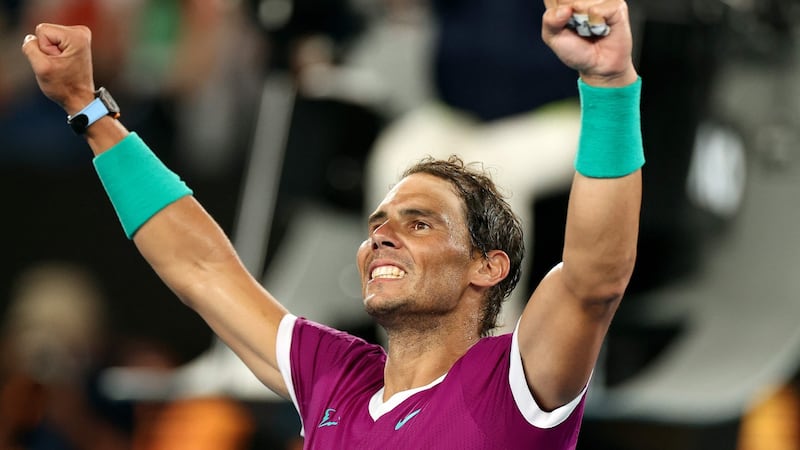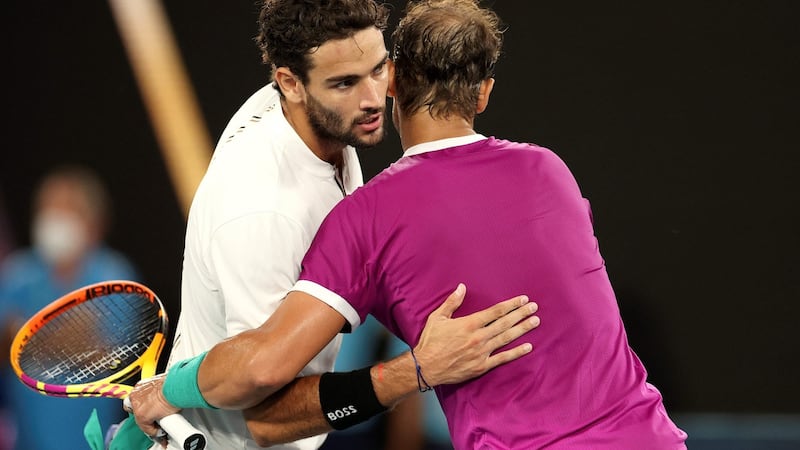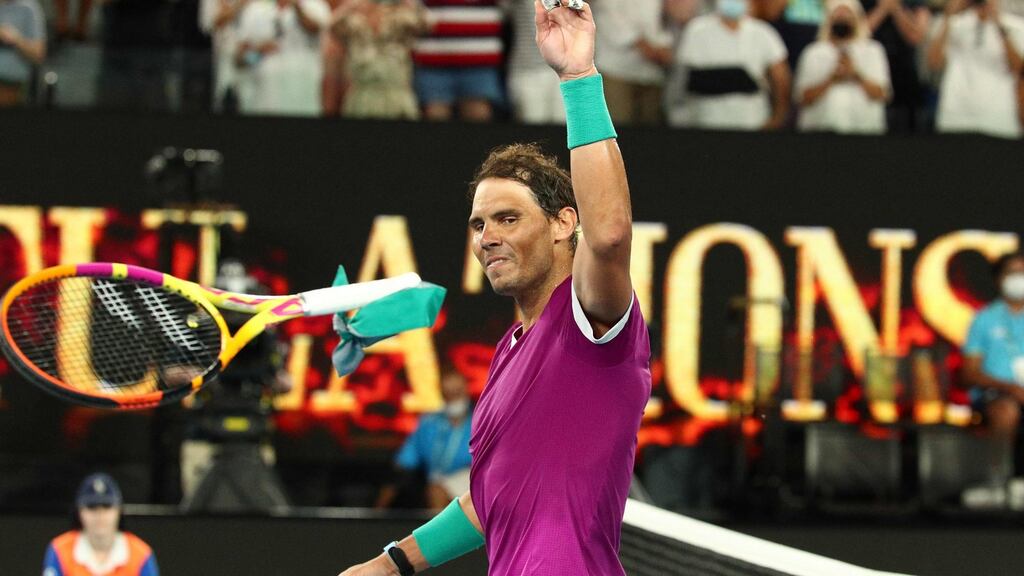Across the 20 seasons that Rafael Nadal has spent travelling the world as a professional tennis player, he has slowly and with great difficulty compiled one of the greatest sporting CVs the world has seen. He has won so much both at his very best and when his body has been on the brink of crumbling, but what he has achieved so far this year already stands high on his unending list of achievements.
After a six-month layoff due to a chronic foot injury, a recent bout of Covid and swirling doubts about whether he would ever return to competition, at 35 Nadal has risen to produce one of his more improbable runs to a grand slam final at the Australian Open.
He has not only done so by relying on his unrelenting fight, but by adapting and playing efficiently, attacking tennis at a time when his body most needs it. On Friday afternoon under the Rod Laver Arena roof, he outplayed Matteo Berrettini for two sets and then held off a late fightback to win 6-3, 6-2, 3-6, 6-3 and reach his sixth Australian Open final.

“I started the match playing great. The first two sets were one of the best so far since a long time. Then I know how good Matteo is, he is a very solid player, very dangerous. In the third I know at some point he is going to go for the shots,” said Nadal. He noted that he’d have to suffer but he won.
Nadal’s victory has afforded him many more distinctions that will give him great satisfaction. After being told for so many years that his playing style would not be conducive to longevity in his career, he continues to succeed in his advancing age. He is now the fourth oldest man in the Open Era to reach the Australian Open final and only four other men aged 35 and over have reached any major final.
Most importantly though, on Sunday he will compete for his 21st grand slam title and the chance to break his tie of 20 with Novak Djokovic and Roger Federer and become the sole owner of the men’s all-time grand slam record.
Asked on-court about the possibility of winning his 21st title, Nadal said the focus was only on this tournament and he resolved to simply enjoy the achievement. “For me it’s all about the Australian Open more than anything else. It just an amazing event that as I said a couple of days ago now, I have been a little bit unlucky in my career with some injuries,” he said.
As rain forced the Rod Laver roof into action shortly before play was due to begin, the match-up issues for Berrettini were always clear. Berrettini has done an incredible job of improving each year, but while he can unleash hell with his serve and forehand, his backhand is by far the worst shot on the court in most matches against the best.
Unfortunately for Berrettini, he just so happened to be standing before a player who has spent his career tearing the weak backhands of right-handed players apart. Nadal started the match finding ample forehands and he used them to relentlessly pepper the Berrettini backhand, dragging him off the court with every new crosscourt forehand.
When Nadal was not exposing the Italian’s backhand, he pressured the Italian’s poor return of serve. Throughout the first two sets, Nadal served extremely well and breezed through his service games, constantly looking to attack and control rallies with his forehand.
For all of his backhand deficiencies, Berrettini plays with unbridled passion and desire. Instead of slumping, he fought for his life, first stringing together early service games and then using his growing confidence to unleash an incredible return game at 4-3. After producing one of the shots of the tournament, an around-the-post forehand winner, on break point Berrettini survived Nadal’s backhand onslaught, found a forehand and demolished it down-the line to break.
After the Italian served out the third set, the match had changed. Berrettini was breezing through his service games, utterly demolishing the ball, and it looked like a different match. Berrettini had his chance at 3-3, 15-30 but he netted a forehand and Nadal held serve. Suddenly, he was under pressure again in a long deuce game filled with tension, long points and soundtracked by a roaring crowd. It ended with two consecutive forehand errors by Berrettini to give up the decisive break and Nadal served out a brilliant win.

This run has been defined by Nadal’s adaptability. With his chronic foot injury, he knows that he cannot grind for hours behind the baseline and so he has resolved to be as efficient as he has ever been. Even against Berrettini, the biggest server he has faced this year in Melbourne, instead of his preferred deep return position, he took up an advanced position, split-stepping forward into the ball to meet those enormous serves early.
Before the tournament, even when it was not clear that Novak Djokovic would attempt to travel to Melbourne, there was no buzz about Nadal winning his 21st grand slam title here. Nadal himself played his own chances down as he simply tried to see how his body and his game would react in such unideal circumstances. It seemed like a sensible outlook. But over his career Nadal has defied logic, and as he returned to compete for another Australian Open title, he has done so once more. - Guardian














